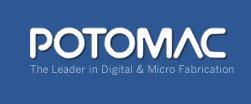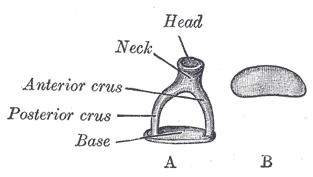 3D printing has been providing various forms of prosthetic devices such as fingers, hands, arms and legs for a short time now, mostly due to the fact that it is affordable, easy to use, faster than traditional manufacturing, and provides for total customization. Companies are also really beginning to see the potential of 3D printing in the rapid prototyping of medical products.
3D printing has been providing various forms of prosthetic devices such as fingers, hands, arms and legs for a short time now, mostly due to the fact that it is affordable, easy to use, faster than traditional manufacturing, and provides for total customization. Companies are also really beginning to see the potential of 3D printing in the rapid prototyping of medical products.
One company, Potomac Laser, has been in the business of specializing in and creating medical devices, as well as other unique electronic devices for over 32 years now. Located in Baltimore, Maryland, they use 3D printing, laser micromachining, micro CNC and micro drilling in their many unique projects.
Just recently, a woman by the name of Monika Kwacz, who is a researcher at the Institute of Micromechanics and Photonics at Warsaw Technical University in Poland, contacted Potomac Laser to see if they could help her 3D print something almost unheard of. She had been studying stapedotomy, which is a form of surgical procedure that aims at improving hearing loss in those who suffer from the fixation of their stapes. The stapes, which is one of the 3 tiny bones within the middle ear involved in the conduction of sound vibrations to the inner ear, is the smallest and lightest bone within the human body.
Millions of peoples in the US alone suffer from a condition called Otosclerosis, where the stapes becomes stuck in a fixed position, and can no longer efficiently receive and transmit vibrations needed for a subject to hear properly. This is mostly due to a mineralization process of the bone and surrounding tissue. It is estimated that 10% of the world’s adult Caucasian population suffers from this condition in one form or another.
Monkia Kwacz provided drawings to Potomac to see what they thought would be the best method for creating the inner ear prosthesis that she had desired. “We thought that, at least initially, 3D printing would be the best way to do these,” President of Potomac Laser, Mike Adelstein told 3DPrint.com. “She had tried 3D printing with some other systems, but apparently couldn’t achieve a resolution that was required.”
“Intuitively, it seemed to me that 3D Printing would be the best technology for first prototyping,”Kwacz told Potomac. “We needed the first prototypes to experimentally verify that the device geometry was well designed and we will be able to implant the device in a temporal bone. If the geometry is good, then we will check the mechanical operation of the device. However, if we find we do need to modify the device geometry, 3D Printing provides an easy way to modify in the CAD design step.”
Adelstein had the perfect solution for her, through the use of a 3D Systems ProJet high-resolution 3D printer. Using the industrial level printer, they were able to print out the prosthesis needed by Kwacz. The results were quite incredible, and Kwacz was left very impressed. These were only the prototypes (pictured below), as they are printed in Acrylic. However, the final parts will most likely need to be printed in titanium or another metal.
While nothing has been officially decided as of yet, it looks as though the team will utilize one of 3D systems’ metal 3D printer in order to print the final parts as well. “We are going to try and 3D print it (in metal),” explained Adelstein. “There is a hole that is in [the prosthesis], that probably is going to be too small to be done with a 3D printer, but what we like to do is combine technologies. We do things very small, down to 1 micron here at Potomac.”
By utilizing micro laser technologies, they plan to first 3D print the prosthesis in metal, before then using a micro-laser to drill these tiny 1 micron holes. To get an idea of just how small 1 micron is, the thickness of a human hair is typically around 75 microns. The 3D printer is capable of getting details down to 16 microns, so this other technology will be required for the creation of the small holes.
The prototypes, which you see pictured above, are very tiny, yet they still took a couple hours to print because of the extremely high resolution used. However, Adelstein tells us that they could print multiples of the same object just as quickly as printing one. “Even if you ran hundreds of these, it would still take the same amount of time,” he explained. “A lot of our success is derived from manipulation of the software, how we position the parts, what orientation we print them in, and how we clean them after we are done.”
Adelstein believes that 3D printing has huge potential in the development of prosthesis and medical devices of all kinds. He believes it is important that people understand the tremendous capabilities that 3D printing technologies, as well as other micro manufacturing technologies such as micro lasers, micro CNC, etc. have in the creation of devices like these. We could very easily be at the beginning stages of what could help provide tremendous growth within the medical prosthesis industry.
What do you think about these tiny 3D printed ear prosthesis? Did you ever imagine that something like this would be possible on a 3D printer? Discuss in the 3D Printed Hearing Prosthesis forum thread on 3DPB.com.
Subscribe to Our Email Newsletter
Stay up-to-date on all the latest news from the 3D printing industry and receive information and offers from third party vendors.
You May Also Like
3D Printing Unpeeled: New Arkema Material for HP, Saddle and Macro MEMS
A new Arkema material for MJF is said to reduce costs per part by up to 25% and have an 85% reusability ratio. HP 3D HR PA 12 S has been...
3D Printing News Briefs, January 20, 2024: FDM, LPBF, Underwater 3D Printer, Racing, & More
We’re starting off with a process certification in today’s 3D Printing News Briefs, and then moving on to research about solute trapping, laser powder bed fusion, and then moving on...
3D Printing Webinar and Event Roundup: December 3, 2023
We’ve got plenty of events and webinars coming up for you this week! Quickparts is having a Manufacturing Roadshow, America Makes is holding a Member Town Hall, Stratafest makes two...
Intuitive Machines Debuts $40M Hub for Lunar Ambitions and 3D Printing Tech
Best known for its pioneering work in lunar exploration and its development of the Nova-C lunar lander, Intuitive Machines (Nasdaq: LUNR) has marked yet another significant milestone. The leading space...

































